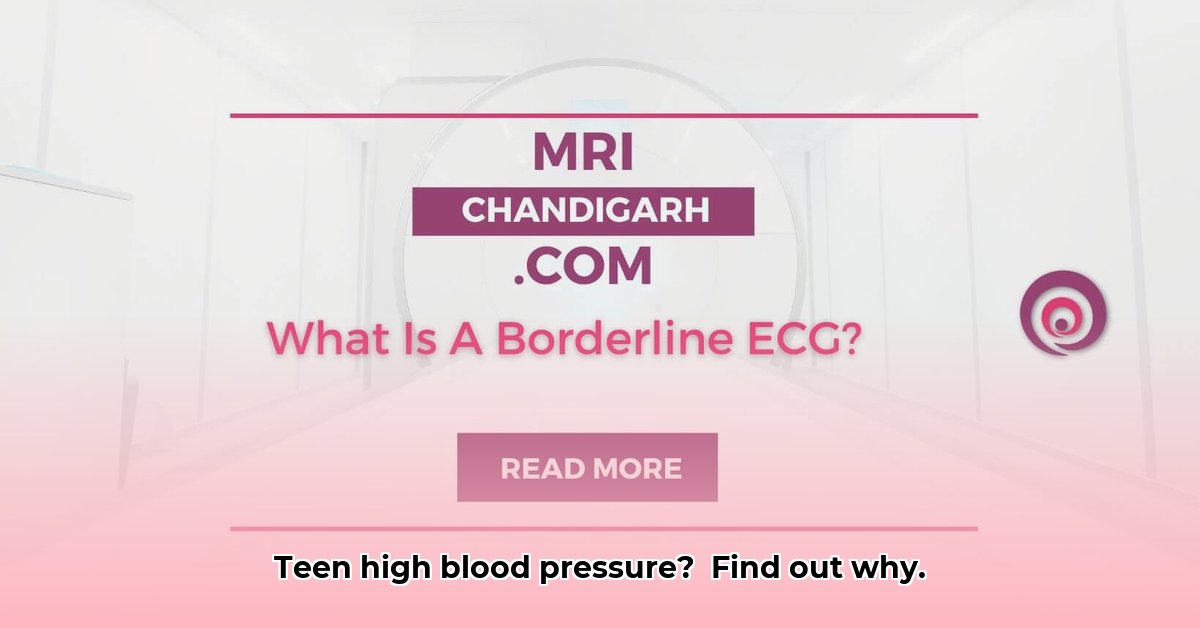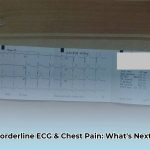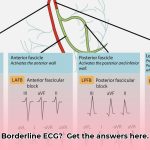Imagine a 17-year-old presenting with high blood pressure (hypertension) and a slightly abnormal heart rhythm indicated by a borderline ECG (electrocardiogram). This seemingly simple case underscores a crucial point: a routine ECG may not always provide the complete picture. This article emphasizes the importance of a thorough, integrated approach—combining detailed physical examinations with advanced diagnostic testing—when evaluating young individuals with both hypertension and borderline ECG results. We will illustrate, through a real-world case, how seemingly minor clues can reveal underlying heart conditions. Furthermore, we will offer actionable advice and clear guidelines to ensure optimal care for your young patients. This extends beyond mere numerical interpretation, emphasizing the significance of understanding the patient’s overall health narrative.
Understanding Borderline ECG and Hypertension in Adolescents: A Comprehensive Guide
When a teenager visits the doctor, the findings can sometimes extend beyond a routine checkup, particularly when encountering complex scenarios like borderline ECG readings coupled with hypertension. Let’s delve into this fascinating yet often perplexing intersection of adolescent hypertension and nuanced ECG interpretation.
Deciphering the Enigma of Borderline ECG Results
Envision receiving a photograph that’s slightly out of focus. While the subject is discernible, the finer details remain indistinct. A borderline ECG reading is analogous to this scenario. It suggests a possible irregularity in the heart’s electrical activity but lacks the clarity for a definitive diagnosis. It serves less as a diagnosis and more as an indicator necessitating further investigation. A borderline ECG functions as a detective’s clue, pointing towards the need for additional information to resolve a case potentially linked to cardiac arrhythmias.
The approach should transcend merely addressing the borderline ECG reading; it necessitates understanding the underlying cause. Additional testing is nearly always essential to ascertain whether a genuine cardiac issue exists or if the reading is simply an anomaly. This mandates a comprehensive evaluation rather than a superficial intervention.
Hypertension in Teens: A Significant Concern
Although more prevalent among adults, hypertension is not uncommon in the adolescent demographic. This should not be dismissed, as it signals potential underlying health issues that could lead to severe cardiovascular complications later in life, namely cardiovascular disease. Timely diagnosis and vigilant monitoring are paramount. This extends beyond a mere reading on a blood pressure monitor, potentially indicating a more significant underlying problem.
Illustrative Case Study: A 17-Year-Old’s Diagnostic Odyssey
Consider a case involving a 17-year-old patient presenting with a borderline ECG reading and elevated blood pressure. His case underscores the significance of a meticulous approach to diagnosis. Clinicians noted a discrepancy in blood pressure measurements between the patient’s upper and lower extremities, a finding not typically observed. Additionally, they detected a slight delay in the femoral pulse relative to the radial pulse. These findings suggested a potential obstruction of blood flow, raising suspicion for aortic coarctation.
Initial chest X-ray results yielded no definitive findings. However, a subsequent CT scan revealed an interrupted aortic arch, a congenital anomaly affecting the main artery responsible for transporting blood from the heart. This case illustrates the limitations of relying solely on standard diagnostic tests and the potential requirement for advanced imaging techniques. The borderline ECG, in conjunction with subtle clinical signs, ultimately led to the identification of a significant underlying health issue. Imagine the potential ramifications had his condition remained undiagnosed. This emphasizes the need for prompt cardiac evaluation.
The initial uncertainty surrounding the borderline ECG, coupled with atypical physical examination findings, prompted further investigation. This case elegantly demonstrates that interpreting a borderline ECG reading in isolation is insufficient. A comprehensive evaluation is essential to unveil the underlying etiology. The absence of overt signs on the initial X-ray further emphasizes the diagnostic complexities encountered in such cases, highlighting the importance of expertise in pediatric cardiology.
Navigating Diagnostic Challenges and Refining Standard Practices
This case study prompts a critical reassessment of current approaches to evaluating hypertension in young individuals. While routine CT scans are not universally performed, this case underscores their potential value. Should standard diagnostic protocols be reconsidered in cases that deviate from typical presentations? When conventional tests fail to provide a clear explanation, exploring alternative diagnostic avenues becomes paramount, especially concerning hypertension diagnosis.
A detailed patient history, coupled with a thorough physical examination, remains indispensable for gathering essential diagnostic clues. These traditional methods often provide the earliest, and sometimes the most insightful, diagnostic information. They serve as crucial tools in our investigative arsenal when addressing concerns related to cardiovascular health.
A Collaborative Approach: Practical Recommendations for Diagnosis and Management
Below is a breakdown of the roles and recommended actions for various stakeholders:
| Stakeholder | Short-Term Actions | Long-Term Strategies |
|---|---|---|
| Primary Care Physician | Collect comprehensive patient history, repeat ECG if warranted, consider echocardiography if physical examination raises concerns. | Conduct annual checkups with a focus on cardiovascular health, closely monitor blood pressure and heart function, especially concerning ECG abnormalities. |
| Cardiologist | Perform echocardiography, conduct advanced imaging (e.g., CT scans), and consider cardiac catheterization to assess heart function. | Provide ongoing cardiac monitoring and implement prophylactic measures as necessary to avert future complications. |
| Cardiovascular Surgeon | Assess surgical feasibility and determine optimal timing for intervention based on patient condition and risk profile. | Employ minimally invasive surgical techniques and optimize pre- and post-operative care protocols. |
| Patient & Family | Comprehend diagnostic uncertainties, adhere to treatment regimens, and embrace heart-healthy lifestyle modifications. | Undertake long-term condition management and seek emotional support to address challenges including gaining a thorough understanding of aortic issues. |
The Broader Perspective: A Holistic Framework
This 17-year-old’s experience imparts a crucial lesson: Borderline ECG findings and hypertension cannot be addressed in isolation. A holistic approach—integrating comprehensive medical history, meticulous physical examination, and judicious application of advanced imaging—is crucial for adolescent patients. This emphasizes that what might initially appear straightforward can, in fact, point to underlying complexities. Subtle clues gleaned during a thorough examination often unlock diagnostic mysteries.
Key Takeaways:
- Borderline ECG findings are inherently ambiguous and necessitate a comprehensive diagnostic strategy.
- Hypertension in adolescents demands prompt evaluation due to potential long-term cardiovascular consequences.
- Meticulous physical examinations, including assessment for aortic arch anomalies, is indispensable.
- Advanced imaging studies (e.g., chest X-ray, CT) are often necessary to confirm diagnoses.
- A multidisciplinary approach, involving cardiologists and other specialists, is often warranted.
- Continuous research efforts are essential to refining understanding of these conditions within pediatric demographics, ultimately leading to improved patient outcomes.
- Wellness Fair Ideas for Work to Boost Employee Wellbeing - December 15, 2025
- Affordable Employee Wellness Fair Ideas for Any Budget - December 14, 2025
- Employee Wellness Programs Strategically Benefit Employee Health And Retention - December 13, 2025
















